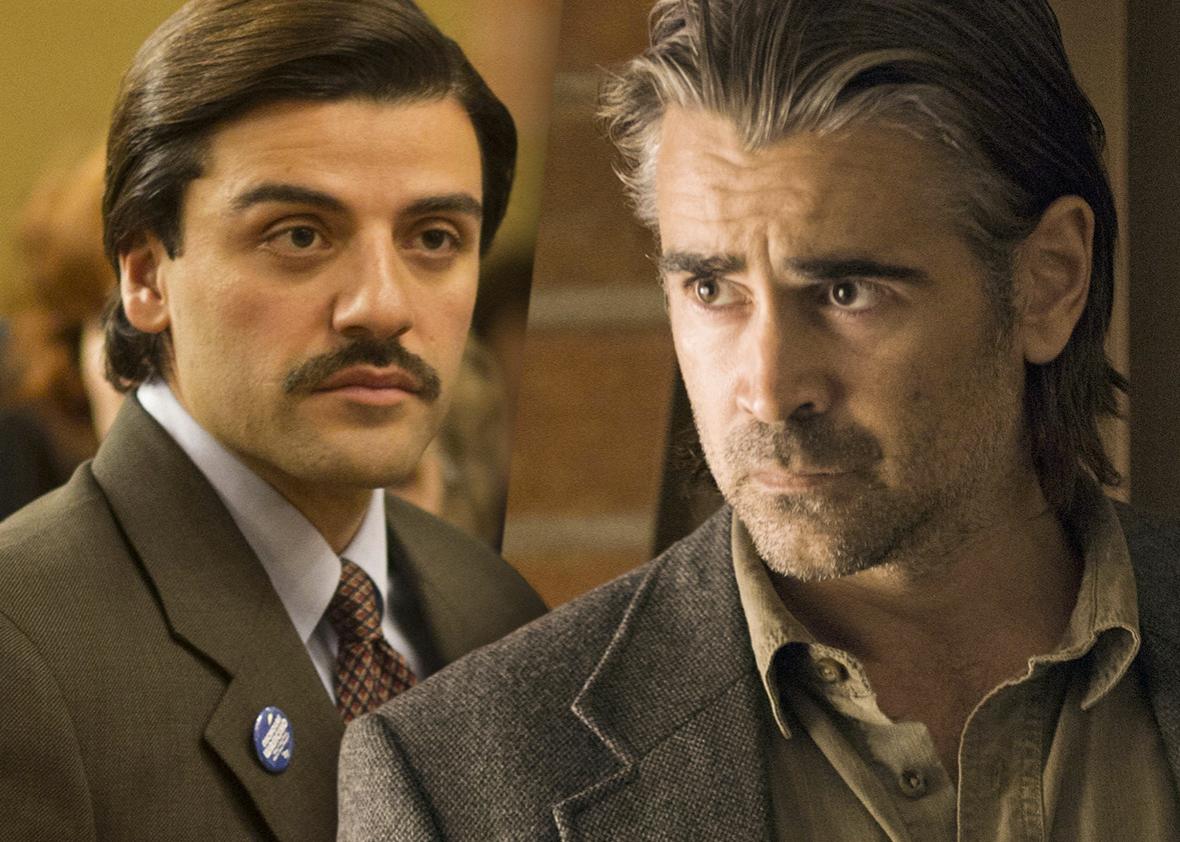Despite its monumental themes, David Simon’s recently concluded HBO miniseries Show Me a Hero is remarkable for its narrow focus. It takes on questions of race relations that are, if anything, more urgent now than they were in the series’ late ’80s and early ’90s, but for the most part, it remains focused on local struggles and private emotions. Only once, when, in its closing moments, a title card notes that the theories of one of its characters, Oscar Newman, about public housing “are now widely accepted” does it address itself directly to the larger implications of its plot.
I’d argue that it’s actually worth comparing Show Me a Hero to HBO’s other recent drama series, the second season of True Detective. Despite the obvious differences between the two shows, both take a microscopic interest in the knotty logistics of city governance and the procedural details of their characters’ jobs. (Pizzolatto has said that he’s read the entire 1,000-page Practical Homicide Investigation handbook.) But while Show Me A Hero is based on a true story, developed from a nonfiction book of the same name by the journalist Lisa Belkin, True Detective is a work of fiction about works of fiction, inspired by defunct pulp magazines. Like its source material, the series deems itself “true” with a wink. The only true thing it offers is a promise that truth will elude us, buried in the absurdly dense folds of its narrative. See, for example, Willa Paskin’s precise and thorough explanations of the second season’s plot and finale, without which I might not have understood what I was watching at all.
True Detective baffles viewers because it demands that we hold the whole map of its interlocking conspiracies in our heads at once if we want to understand any of their sinister parts. This may be why the season’s most emblematic images are its enigmatic aerial shots of freeways. In them, curving roads weave together, forming accidental signs of almost occult significance. Obvious metaphors for the show’s incoherently overcomplicated plot, they are static embodiments of the season’s narrative form, of conspiracies that overlap and underlay one another, cross and diverge. True Detective creates a world that doesn’t feel lived-in precisely because it’s impossible to move through it and comprehend it at the same time.
By contrast, Show Me A Hero works because it strategically resists this kind of birds-eye-view. The show does have a few aerial shots of its own—mostly near the beginning, when the aggressively-bearded city planner Oscar Newman (Peter Riegert) clambers into a helicopter to survey Yonkers as a whole. It’s an apt bit of narrative bookending, then, that his theories are deemed “widely accepted” as the series comes to a conclusion. He quietly opens the show to the broader implications of its narrative, while poor, doomed Nick Wasicsko (Oscar Isaac) is too caught up in his own story to see the larger picture himself.
More often than not, though, series cinematographer Andrij Parekh’s camera sits at eye level, watching events unfold as its characters do. True Detective demands that we take the bigness of its story for granted, but Show Me a Hero unfurls its stakes much more patiently. And whereas True Detective’s characters feel like dots on some massive, convoluted narrative map, Show Me a Hero’s narrative is told through the more mundane interactions of its characters. As we see Wasicsko struggle to make Yonkers his kingdom, we’re also asked to identify with characters like Catherine Keener’s Mary Dorman, following her journey out of narrow-minded prejudice. Over the course of six episodes, Dorman goes from vocal opponent of desegregation efforts to avid ally of her new neighbors. She doesn’t make that journey because she suddenly recognizes the horrors of racism writ large, but because she learns to see the people around her, getting to know them in the service of supporting the city she loves.
Where you need to be handed a map to make sense of True Detective, Show Me A Hero includes viewers in the process of mapping the city, learning how to chart the relation of its parts to one other. Just look at the title logo that appears briefly at the top of each episode, stark white letters muddied slightly by the faint beginnings of a map creeping in from the left—a map in progress, one that the show subtly invites us to fill out as we watch.
